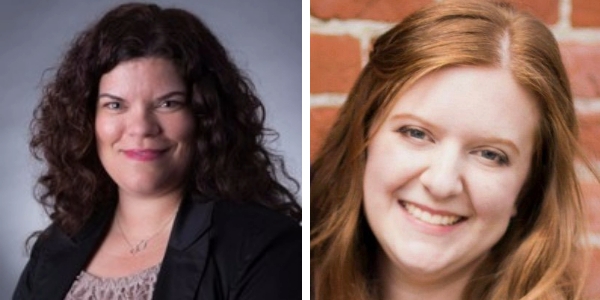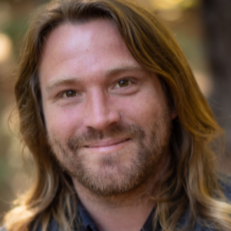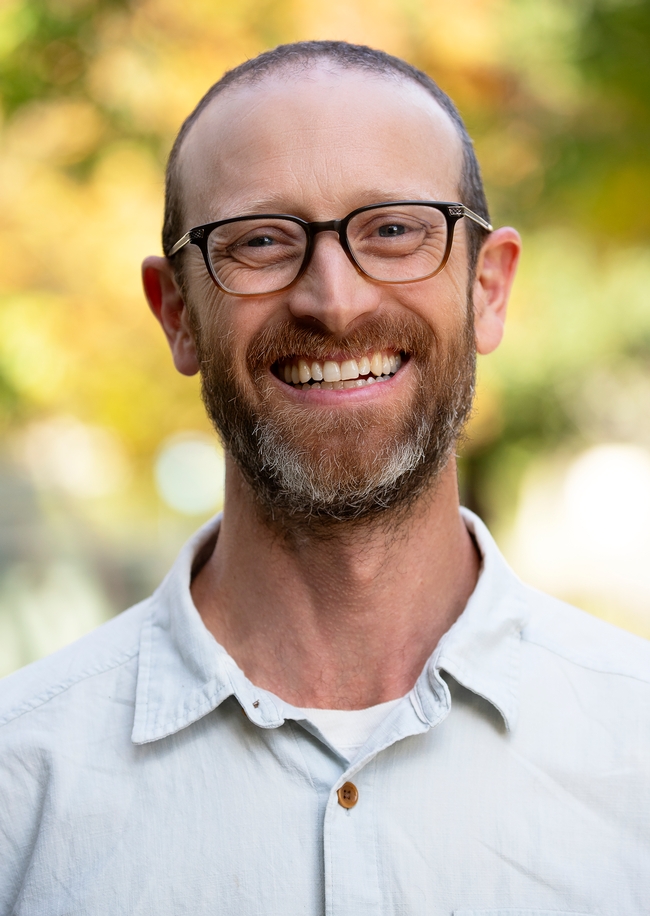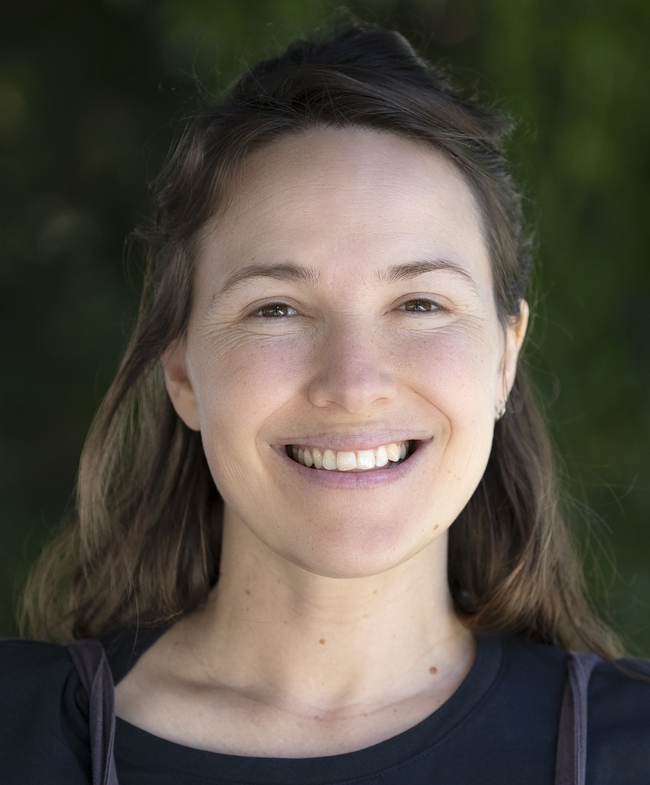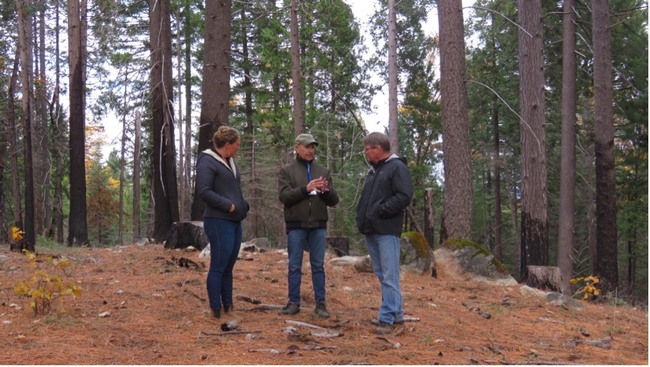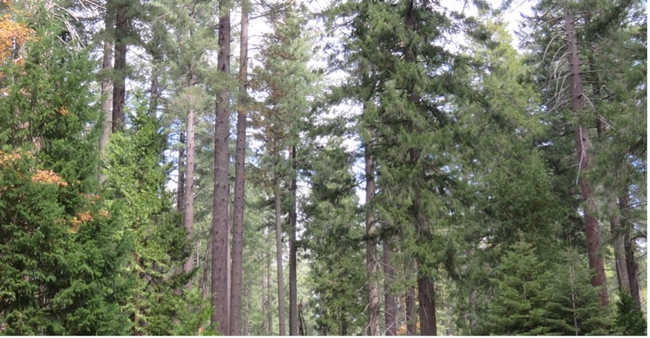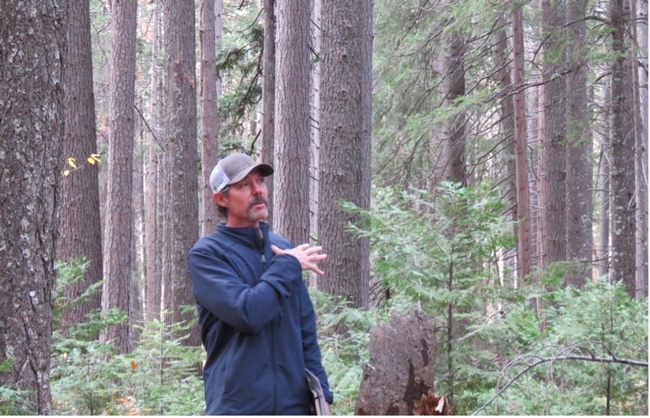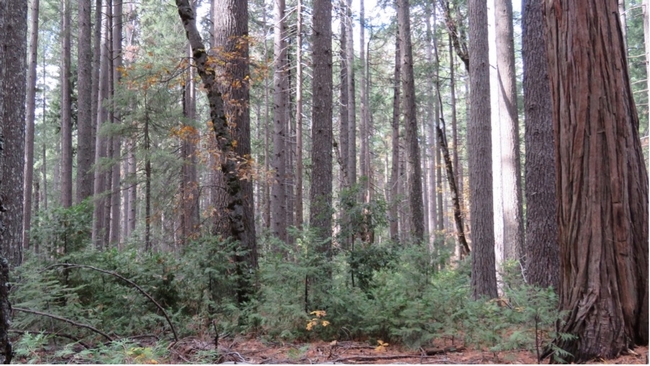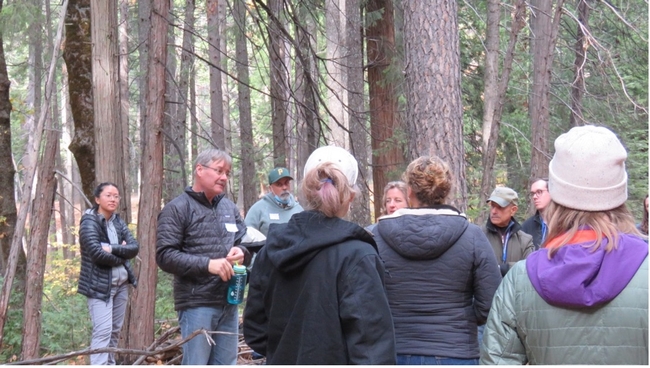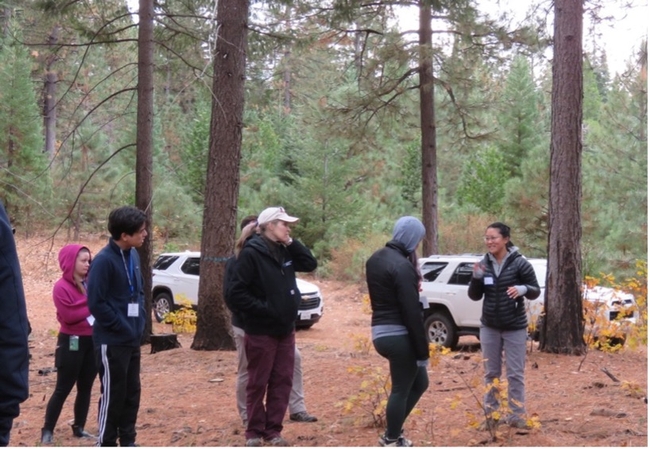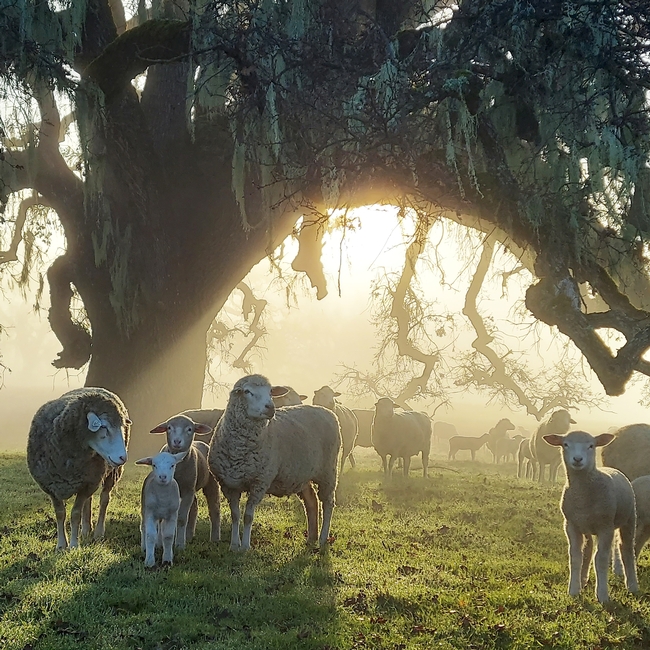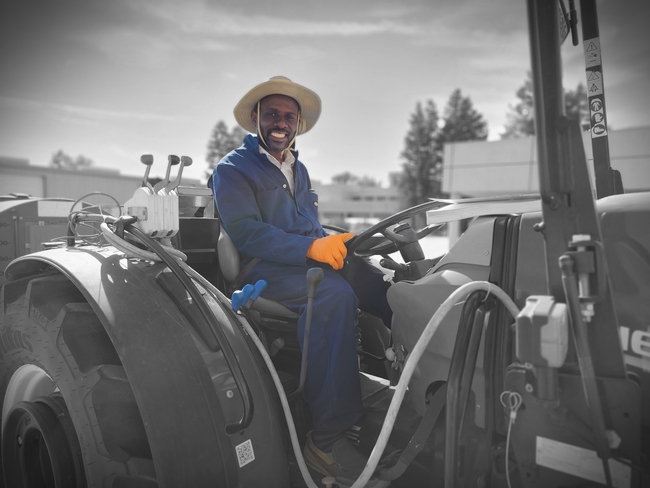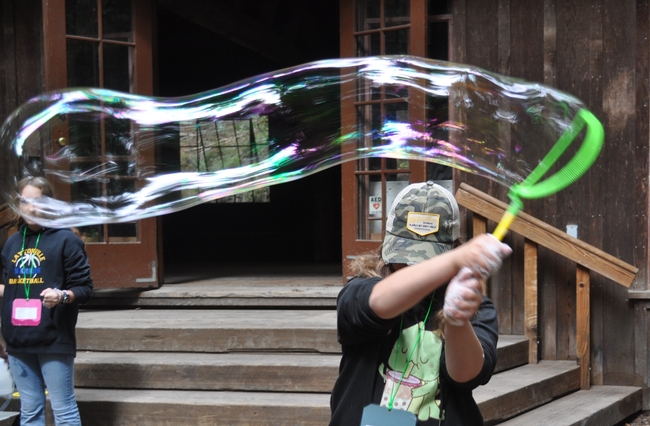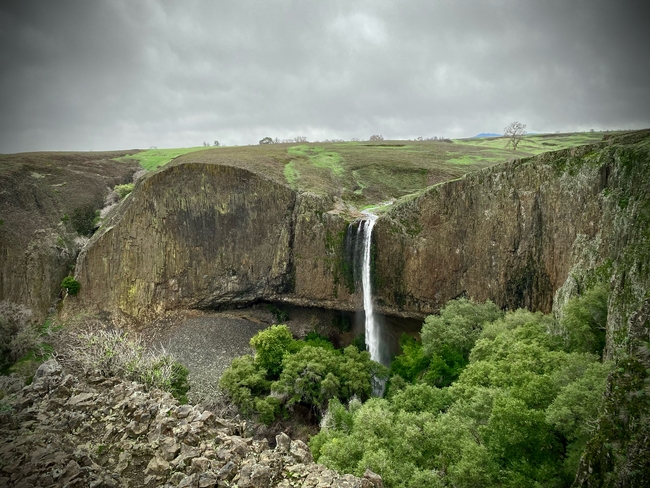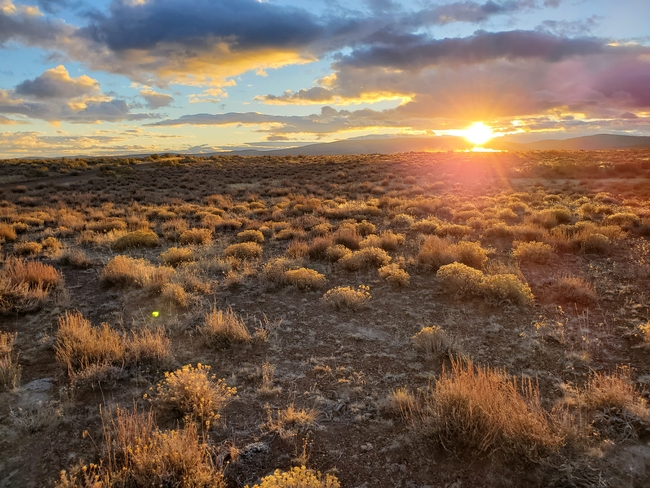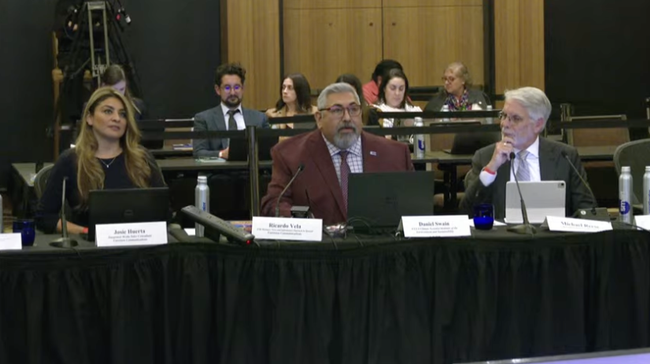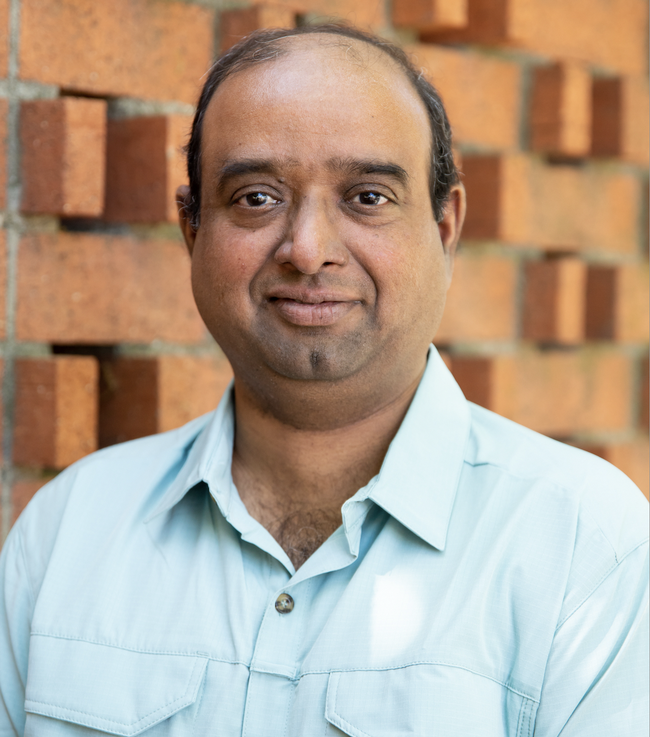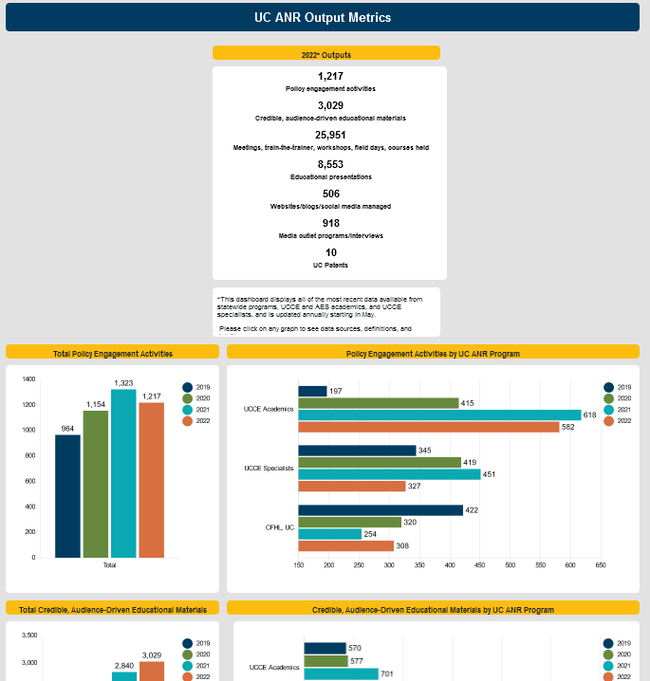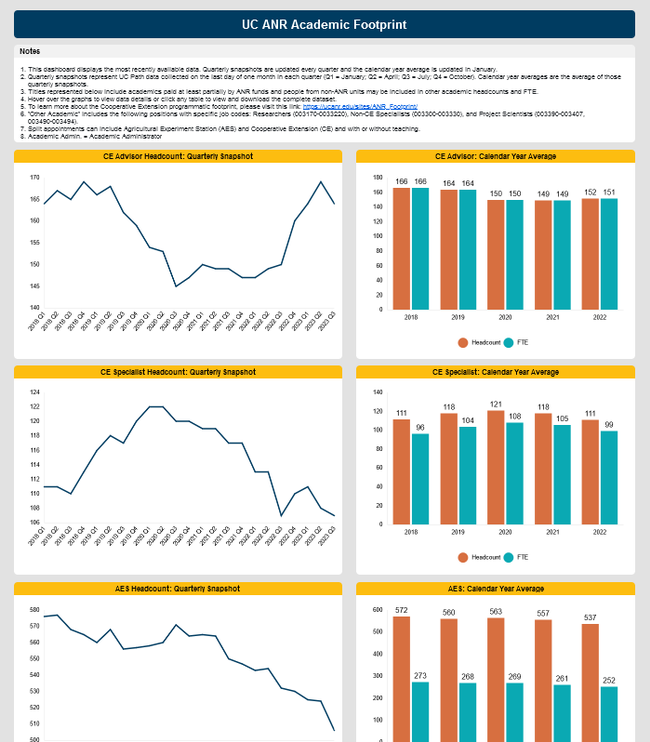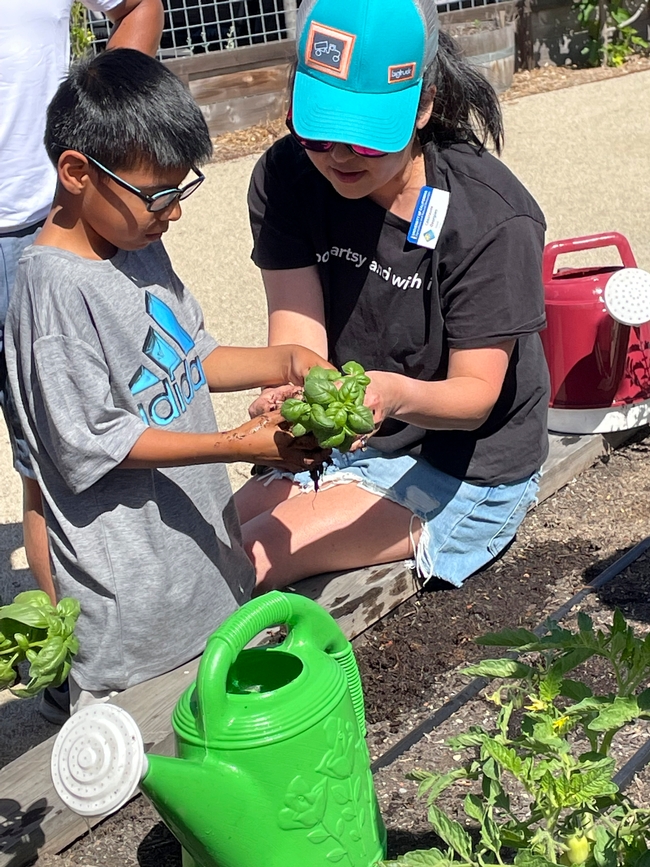Posts Tagged: November 2023
Names in the News
Musil, Zuwala join ANR Business Operations Center
Erin Musil joined the ANR Business Operations Center on Nov. 27 as an analyst. As part of Business Partner Team 5, she will provide financial services to UC ANR administrative and programmatic units, including Facilities Planning and Management, Information Technology, Publishing, Risk & Safety Services and Human Resources.
The Los Altos native earned her undergraduate degree from University of Colorado in Boulder, Colorado. She made her way back to the Bay Area and has worked most of her career in financial aid departments for private career arts universities.
Musil is based at the ANR building on Second Street in Davis and can be reached at emusil@ucanr.edu.
Kaitlin Zuwala joined the BOC team on Nov. 20 as a financial assistant. She will assist Business Partner Team 1 in offering financial services to UCCE offices in Alameda, Contra Costa, Imperial, Inyo, Mono, Lake, Los Angeles, Mendocino, Modoc, San Diego, San Mateo, San Francisco and Santa Clara counties.
Prior to joining UC ANR, Zuwala worked with theUC Davis School of Veterinary Medicine Teaching Hospital for 7 years.
Zuwala is based at the ANR building on Second Street in Davis and can be reached at krvaughn@ucanr.edu.
Woodward begins as forest advisor for Santa Cruz, Santa Clara and San Mateo counties
Brian Woodward joined UC Cooperative Extension on Nov. 6 as area forest advisor for Santa Cruz, Santa Clara and San Mateo counties. Woodward will work to advance resilience and effective management of forest communities in the Santa Cruz Mountains region to deliver ecological, economic and social benefits to the broader community.
Woodward's responsibilities include conducting applied research in forest management, postfire restoration and ecology; engaging in outreach and education; and promoting cross-boundary forest management using sound, science-guided techniques.
“My goal as an advisor is to promote the use of the ‘whole toolbox' in management of this forest system,” Woodward said. “Whether it be through prescribed fire; vegetation management, utilization and thinning; or home hardening – we can all do our part to ensure these iconic forest communities are more prepared for the next major disturbance event.”
After growing up among the oak woodlands of California's Lake County, Woodward embarked on an academic career focused on biological and ecological sciences. He earned a bachelor's in environmental studies from Sonoma State University, followed by a master's in forest sciences and a Ph.D. in ecology from Colorado State University. His doctoral research investigated the response of coast redwood forest systems to fire and disturbance.
Equipped with the latest research and best data on forest and natural-resource management, Woodward hopes to provide all community members with the tools, trainings and resources they need.
“Both as a scientist and as an enthusiast of our incredible forests, I'm excited to work with forest managers and property owners on the most effective techniques to strengthen forest resilience and support recovery,” said Woodward, who has lived “on and off” in the Santa Cruz/Monterey area since 2007. “I also look forward to collaborating with researchers and the greater community to address the pressing concerns of this region.”
Woodward is based at the Santa Cruz County UCCE office in Watsonville and can be reached at bdwoodward@ucanr.edu and (831) 348-7305. He is on X (Twitter) @woodcology and BlueSky @woodcology.bsky.social.
Pitton joins UCCE as environmental horticulture advisor for Placer and Nevada counties
Bruno Pitton joined UCCE on Nov. 1 as the environmental horticulture advisor for Placer and Nevada counties. He brings over 20 years of experience in environmental horticulture.
“I am excited to be the UCCE environmental horticulture advisor for Placer and Nevada counties,” said Pitton. “I want to help improve the sustainability of the landscape and nursery industry, while providing home gardeners with science-based solutions.”
Prior to joining UCCE, he worked in UC Davis Department of Plant Sciences, administering a grant-funded research and extension program for California's nursery and greenhouse industry. While an undergraduate student, he worked at the UC Davis Student Farm, an organic production and research farm, and the Arboretum Nursery, which produces California native and Mediterranean-adapted plants.
After graduation, Pitton was employed in operations at the UC Davis College of Agricultural and Environmental Sciences' research greenhouses and teaching gardens. In the greenhouses, he oversaw integrated pest management, irrigation and fertilizer programs for plant science research.
“The teaching gardens were used to educate students about landscape plants,” Pitton said, “and I gained valuable practical experience managing all aspects of landscape maintenance from urban forestry to perennial propagation and planting.”
While working in the CA&ES greenhouses and teaching gardens, he conducted research on residential irrigation runoff with UCCE environmental horticulture specialist Loren Oki and received an M.S. in horticulture and agronomy.
In 2015, he began working full-time with Oki on a nationwide research project to develop online decision support tools that help nursery and greenhouse growers reuse their irrigation runoff water, affectionately known as “CleanWateR3: Reduce, Remediate, Recycle.” They collaborated with academics and two California nurseries to understand irrigation application and runoff patterns to develop cleanwater3.org. He secured over $600,000 in funding for his Ph.D. research on nitrogen management in nursery production to help growers meet state regulations, increase nitrogen use efficiency and reduce the environmental impact of nitrogen loss.
After completion of his Ph.D., Pitton conducted research to optimize nutrient application rates in the vegetable transplant industry and developed irrigation best management practice training for California's underserved greenhouse and nursery staff to improve water-use efficiency and plant health.
Pitton is based in Auburn and can be reached at bjpitton@ucanr.edu. Follow him on X (formerly Twitter) @EnvHort.
Oppliger joins UCCE as community health and nutrition advisor
Kitty Oppliger began working with UC Cooperative Extension on Oct. 23 as the community health and nutrition advisor for the Central Sierra (Amador, Calaveras, Tuolumne and El Dorado counties) and Placer and Nevada counties.
Centering cultural resilience and holistic health for the diverse communities across this region, Oppliger aims to address needs in the areas of healthy lifestyles, health equity, food and water security, Indigenous food sovereignty, and climate change.
“I look forward to working with community members as we strive to provide healthy environments, equitable access to food and health care, and resilient communities for all California residents by eliminating health disparities and resource scarcity,” she said.
Oppliger will partner with local faith-based organizations and meal ministries to address food insecurity, and she hopes to collaborate with tribal communities on food and land sovereignty issues by integrating traditional harvesting, growing and cooking methods into existing nutrition frameworks.
Born and raised in the Upper Peninsula of Michigan, a remote region with a prominent Native American presence, Oppliger worked with tribal leaders to develop sustainable and resilient food systems at Michigan Tech University, where she earned her bachelor's degree in ecology and biology.
Motivated by her own experience with limited access to healthy food and medical care in rural Michigan, Oppliger earned her master's in public health with a concentration in sustainable food systems from the University of Michigan. There, she engaged in research on a range of topics – from disability and nutrition to refugee health – centered by a drive for increasing diversity, equity and inclusion in health care and food systems. Most recently, Oppliger has been working on an analysis of Heart Health programming in First Nations tribes of British Columbia.
An avid gardener and forager in the Midwest, Oppliger is eager to translate her knowledge to the unique environment of the Central Sierra. She hopes to work closely with the UC Master Gardener and UC Master Food Preserver programs in UCCE to expand food access and security.
Oppliger is based at the UCCE Amador County office in Jackson and can be reached at koppliger@ucanr.edu.
Singh joins UC ANR as Central Coast agricultural technology advisor
Paramveer "Param" Singh started with UC ANR on Oct. 2 as a UC Cooperative Extension agricultural technology area advisor for Monterey, Santa Cruz, San Benito and San Luis Obispo counties. Singh is responsible for leading innovative applied research programs to address technological challenges in coastal specialty crop production.
In addition to fostering environmental and economic resilience through the adoption of cutting-edge technologies that address critical production and management issues, Singh aims to cultivate collaborations that will help establish an “ag tech” hub on the Central Coast.
“I look forward to building strong partnerships with growers, industry, regional organizations, educational institutions and UC ANR colleagues to deliver economic growth and impact – both in our local communities and across the state,” he said.
Hailing from the small village of Kheri Jattan, Punjab, Singh earned his bachelor's degree in agriculture at Punjab Agricultural University. He earned his master's and Ph.D. in agronomy and crop science at New Mexico State University, where he studied sustainable production options that improve water-use efficiency and ecosystem services of Southern High Plains cropping systems.
Prior to joining UC ANR, Singh was a research project manager with the Irrigation Innovation Consortium at Colorado State University. He managed CSU-TAPS (Testing Ag Performance Solutions), a program that facilitates interactive, real-life farm management competitions.
“Designed as a farming contest and a research framework, TAPS brings together scientists, extension professionals, producers, industry leaders, agriculture students, government regulators and agency personnel to drive innovations for greater profitability and input-use efficiency,” Singh explained.
Singh is based in Salinas, at the Monterey County UC Cooperative Extension office. He can be reached at psbsingh@ucanr.edu and (831) 214-8621.
Godfrey joins UCCE in Bay Area as environmental horticulture and water management advisor
Jessie Godfrey joined UC Cooperative Extension Oct. 2 as an environmental horticulture and water resource management advisor. She serves Alameda, Contra Costa, Santa Clara, San Mateo and San Francisco counties.
Godfrey will be working with nurseries, particularly those involved in tree production, and community-based organizations involved in urban tree planting or environmental horticulture. She also will provide guidance to the UC Master Gardener programs in Alameda and Contra Costa counties.
She is a tree physiologist, with a Ph.D. in horticulture and agronomy from UC Davis. The bulk of her academic training focused on measuring abiotic stress responses in woody perennials, but she developed additional skills through research with seedling nurseries for the USDA Forest Service and CAL FIRE. As a former professional East Bay gardener who focused on climate-appropriate plants, Godfrey says she also learned a lot from landscape horticulture classes at Merritt College.
The Oakland native served in the U.S. Peace Corps as an agroforestry extension specialist in Northern Cameroon.
Godfrey is based in UCCE Alameda County's Hayward office. When she returns from maternity leave in June, she can be reached at jmgodfrey@ucanr.edu and (530) 298-6703 (cell/text).
UC ANR Fire Network hosts wildfire legislative tour with Berkeley Forests
As California grapples with more frequent catastrophic wildfires, the newly established UC ANR Fire Network plays an integral role in providing and advancing science-based solutions and delivering useful tools throughout the state. Recently, the Fire Network hosted an immersive field tour for California legislative staff in collaboration with Berkeley Forests to demonstrate their work in ongoing fire and forestry research.
“We have such a rich network of fire experts and thought leaders within UC ANR,” said Lenya Quinn-Davidson, Fire Network director. “It was great to have everyone in one place, thinking about how we can best inspire and empower positive change through our research, education, outreach, policy and training.”
During the Nov. 17 tour at Blodgett Forest Research Station, UC ANR staff and academics shared their research and experiences with a diverse group of legislative staff. The tour provided an opportunity for scientists and policymakers to connect over shared goals of addressing California's growing wildfire and forest management challenges.
Legislative staff members included Rita Durgin, legislative aide for Assemblymember Cecilia Aguiar-Curry; Spencer Street, legislative director for Assemblymember Vince Fong; Byron Briones, legislative aide for Assemblymember Freddie Rodriguez; Emily Watson, legislative aide for Assemblymember Joe Patterson; Les Spahnn, legislative director for Senator Bill Dodd; Tammy Trinh, policy consultant for Senator John Laird; and Catherine Baxter, consultant for the Senate Natural Resources and Water Committee.
Sitting on 4,000 acres of Sierra forestland, Blodgett Forest Research Station is the flagship site for research within the Berkeley Forests network. The in-person visit gave attendees the opportunity to learn about the different forest management approaches practiced at Blodgett and understand the importance of maintaining research forests across the state.
“We need research facilities like Blodgett,” Yana Valachovic, UC Cooperative Extension forestry advisor, told the group. “It's a way to ask these questions [about forest management].” The research questions answered through experiments at Blodgett have implications that reach beyond the station's boundary, which was demonstrated to tour guests over three tour stops.
UC Cooperative Extension forestry specialist and Berkeley Forests co-director Rob York led the four-hour tour, where visitors could view different forest management treatments and heavy equipment used for treatment, and learn firsthand about UC-led collaborative research projects.
‘Can you run through it? Can you see through it?'
Tour guests joined York at the first stop, a stand (a group of trees of similar age and size) that has not seen treatment by humans for over 60 years. This first stop was a glimpse at what an unmanaged forest looks like through a forester's or wildfire scientist's eyes. Small trees, less than a few feet tall, clustered under a dense overstory, can facilitate a wildfire's quick movement from forest floor to tree canopy. Close clusters of trees make it much easier for fires to burn across a stand, and the spongy layer of duff underneath the guests' feet burns hot when conditions are dry. These stand conditions, coupled with an abundance of downed woody material, can lead to intense fire behavior when conditions are hot and dry.
Leading California wildfire scientist and UC Berkeley professor Scott Stephens said, “Taking stands that look like this into the future with climate change…is nothing less than a trainwreck.” He and York emphasized that a forest's odds of persisting through wildfires are greatly increased when fuel loads are reduced and forests are thinned. York introduced his measure for healthy forest density, suggesting that guests ask themselves: “Can I run through it? Can I see through it?” the next time they visit a forest.
This is not to say that all fire is bad for a forest. Fire is a part of a healthy forest ecosystem and has been for thousands of years, thanks to natural ignitions from lightning and Indigenous stewardship and cultural practices.
The second stop on the tour was a stand where the overstory (canopy) had been thinned, but the surface fuels were not treated with prescribed fire. York explained that solely thinning a forest was not the answer, and that the best treatment would merge prescribed fire and overstory thinning treatments. In fact, a primary facet of the Fire Network's goals has been to increase the number and strength of community-based Prescribed Burn Associations (PBAs). Since 2017, 24 PBAs have formed throughout California and they greatly increase community capacity for prescribed fire in both forested and non-forested ecosystems.
Eating broccoli before dessert?
The tour ended at a stand that had seen both thinning and prescribed fire treatments. It is part of an experiment comparing prescribed fire emissions to wildfire emissions. Another fuels management experiment happening at Blodgett studies livestock grazing as a tool to manage live fuel loads. This project is a collaborative effort between UCCE livestock advisor Dan Macon, Fire Network coordinator Katie Low, and other ANR advisors and specialists. The effort exemplifies the way wildfire demands attention and innovation from outside the fire and forestry fields.
Macon and Low are examining the efficacy of goat grazing and its implications for animal health at Blodgett. This entails seeing how they can encourage goats to graze unfamiliar vegetation. Likening it to human behavior, Low asked the group, “If it was late at night, and you're craving a snack, which would you eat first: a bowl of steamed broccoli? Or your favorite dessert?” The goats that Macon and Low monitor clearly fill up on their “dessert” first and need extra encouragement to graze the woody vegetation, requiring more intervention on the herder's part. Through these glimpses into their research, Macon, Low and York demonstrated to the group that researchers are taking many approaches to help increase the state's wildfire resilience.
Sitting at a critical point of both research and application, UC ANR staff were able to give visitors their unique perspective on the topics of climate change, prescribed burning and forest management on this tour.
York, Stephens and Fire Network members maintained that California policy is moving in the right direction, but encouraged legislative staff to cease measuring impact through one lens. “It's not just about how many acres have been treated,” Stephens emphasized. “It's about impact. It's about changing the direction of the forest.”
Solberg, Gonzalez, Goulart win ‘ANR in Action’ photo contest
Winners of the 2023 ANR photo contest have been selected. This year's photos were chosen for showing “ANR in action” as well as being beautiful, captivating or artistic. Eighty-four photos were submitted by ANR photographers this year.
First place winner is “Green Pastures of Hopland,” showing a flock of sheep and lambs framed by a gnarled tree, taken by Gregory Solberg, staff research associate at ANR Hopland Research & Extension Center.
Second place winner is “Dr. Peter Larbi,” taken by Terri Gonzalez, business officer at Kearney Agricultural Research and Extension Center, which shows the UC Cooperative Extension specialist in agricultural application engineering sitting atop a spray rig
Third place winner “Camp Bubble,” which shows summer camp participants blowing bubbles, was taken by Jean Goulart, 4-H community education specialist in Lake County.
Honorable mentions go to “Tablelands” by Danielle Lee, policy analyst for the Nutrition Policy Institute, and “Sunrise on the Range” by Laura Snell, director of UC Cooperative Extension in Modoc County and livestock and natural resources advisor.
“There were so many beautiful photos submitted, it was hard for us to choose only five,” said Linda Forbes, Strategic Communications director. “With the theme ‘ANR in action' in mind, we ranked photos that depict an ANR activity higher than the many other stunning photos we received.”
Photographers of the top three selections each received a $50 gift card. The two honorable mentions received $25 gift cards.
Photos submitted to the contest will be stored in UC ANR's WebDam and made available for UC ANR presentations, websites, social media, etc., with credit to the photographers.
Vela speaks to UC regents about outreach to Latinos
Ricardo Vela, manager of UC ANR's News and Information Outreach in Spanish, spoke to the UC Regents Public Engagement and Development Committee on Nov. 15 about science communication for Latino Californians.
Vela explained that studies show that even Latinos fluent in English may prefer to receive information in their “language of comfort.” He described partnering with Univision/Entravision to promote a COVID-19 vaccination campaign on TV in Mixteco, Zapoteco, Triqui and Purépecha, indigenous Mexican languages.
Vela introduced Josie Huerta of Univision/Entravision, who told the regents that providing science-based information to indigenous Mexican viewers in their native language was important to establish trust with the skeptical audience. The media company ran the vaccination campaign on local TV, radio, Facebook and Instagram with a link to a UC ANR for more information.
“The combined campaigns generated over 1,173,000 engagements of some form,” Huerta said.
The campaign placed the first TV spots broadcast in a language other than English and Spanish on Univision, Vela added.
“It's just amazing the reach that you have and the breadth of folks that you are able to communicate with,” said Regent Janet Reilly, who chairs the committee. “It's so important. I wish we had this in every aspect of the university.”
Reilly called NOS “an example for the rest of the university how we can reach more people and communicate with them effectively.”
Alumni regent-designate Alfonso Salazar noted that his mother was an Expanded Food and Nutrition Education Program educator, visiting Latino families at their Boyle Heights homes in Los Angeles to deliver nutrition information for 25 years. “My mom is known as 'La Señora' in the neighborhood,” Salazar said.
Regent Jose Hernandez told Vela and Huerta, “I think you guys formed the perfect partnership with respect to getting any newsworthy item out to the Latino population. I think really, really we should use you folks as a model for the rest of the university, as Chair Reilly suggested, because you guys are doing it right and I commend you. Muchas gracias."
The meeting was held at UCLA and live streamed.
Watch Vela's 10-minute presentation and the regents' reactions at https://www.youtube.com/watch?v=mTPm58GnnSs&t=4178s.
Celebration Corner
Who else deserves kudos? Share your good news by sending an email to contentpipeline@ucanr.edu.
Koundinya honored for early career achievement
Vikram Koundinya, UC Cooperative Extension evaluation specialist, received the 2023 Early Career Achievement Award from the National Association of Extension Program & Staff Development Professionals. The award was presented to him on Nov. 29 at the NAEPSDP conference in Salt Lake City.
Koundinya, who is based in the UC Davis Department of Human Ecology, specializes in program evaluation, needs assessment and mixed-methods evaluation and research.
Koundinya has made notable contributions to the field in extension teaching, research, professional competence and service, wrote his nominator and peers in support letters. He has provided several statewide trainings and one-on-one consultations with UC Cooperative Extension advisors, specialists, Agricultural Extension Station faculty and students. He has published research articles in several journals, including 12 of a total of 35 articles since starting at UC Davis. He also has shared his work at several professional conferences and served in leadership roles on NAEPSDP and American Evaluation Association professional committees.
Au wins nutrition and dietetics award
Lauren Au, Nutrition Policy Institute-affiliated researcher and assistant professor of nutrition at the UC Davis, received the 2023 Huddleson Award from the Academy of Nutrition and Dietetics Foundation.
The award recognizes dietitians who were the lead author of a peer-reviewed article that made important contributions to the field of dietetics. The award is named for Mary Pascoe Huddleson, Journal of the Academy of Nutrition and Dietetics editor from 1927 to 1946.
The honored article, “A Qualitative Examination of California WIC Participants' and Local Agency Directors' Experiences during the Coronavirus Disease 2019 Pandemic,” was co-authored by NPI researchers Christina Hecht, Marisa Tsai, Nicole Vital and NPI Director Lorrene Ritchie.
The study examines Special Supplemental Nutrition Program for Women, Infants and Children participants' and agency directors' perceptions, practices and other challenges during the COVID-19 pandemic. Au's research is used to support nutrition policies and reduce disparities among low-income populations.
ANR dashboards make it easy to find data
In 2023, the Program Planning and Evaluation team is proud to have produced new dashboards that organize important data about UC ANR people and outputs. They make it easy to find facts such as the number of UCCE advisors employed by UC ANR from 2018 through 2023. The dashboards are found on the impact numbers and stories web page and are intended for internal use.
UC Master Gardeners teach Napa County residents to grow food
UC Master Gardeners of Napa County have been teaching year-round food gardening with two programs each month.
“Teaching through two methods, we covered different seasonal food growing topics in our one-hour Food Growing Forums by Zoom and in-person, hands-on family programs at the OLE Health Garden,” said Yvonne Rasmussen, UCCE volunteer program coordinator in Napa County.
David Key, UC Master Gardener volunteer, leads this project.

